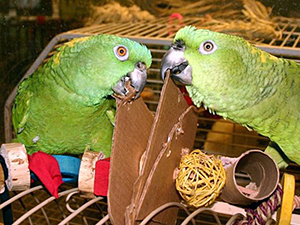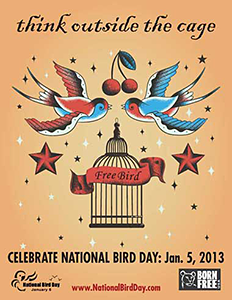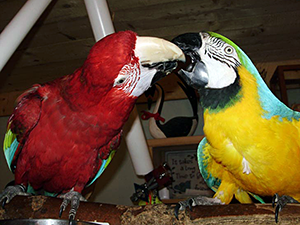
Many animal shelters are rising to the challenge and extending their services to animals other than cats and dogs. They’re now reaching out to experienced animal care and placement partners to help them serve the needs of the wide variety of creatures that walk, slither, or hop onto their doorsteps.
But what happens when they fly?
In honor of this year’s National Bird Day celebration on Saturday, January 5, the Avian Welfare Coalition has produced a series of informative pamphlets designed especially to help shelters and care facilities tend to the needs of birds.
 Parrots and other exotic birds are the fourth-largest population of animals kept as “companions,” and they represent the largest population of captive wildlife in the U.S. It’s no surprise that they have become one of America’s fastest-growing groups of unwanted pets.
Parrots and other exotic birds are the fourth-largest population of animals kept as “companions,” and they represent the largest population of captive wildlife in the U.S. It’s no surprise that they have become one of America’s fastest-growing groups of unwanted pets.
There are currently over 100 self-described bird rescue or sanctuary organizations in the U.S. Some of them have come into existence in just the past few years to address the dramatic rise in displaced captive birds. Many are already filled to capacity. Often, the local animal shelter is the only option available to receive unwanted, abused, or abandoned birds.
“We’ve created our outreach efforts with animal shelters in mind,” says the Avian Welfare Coalition’s president, Denise Kelly. “Our aim is to help them improve the care they provide for abandoned birds.”
“Our publication, Captive Exotic Bird Care: A Guide for Shelters, is intended to serve as a comprehensive guide on caring for birds in shelters. However, we also wanted to provide shelters with information online — information to help them deal with parrots and other exotic birds in less-than-ideal conditions, or in emergency situations when shelters have to rely on staff with little or no experience with birds. We now offer shelters the online tools to quickly assess whether an incoming bird is in distress or in immediate need of medical care, and to meet a bird’s basic short-term housing and care needs until more experienced hands arrive.”

“Our goal is to help shelters help birds,” says Denise Kelly.
For more information, visit www.avianwelfare.org or nationalbirdday.com.

